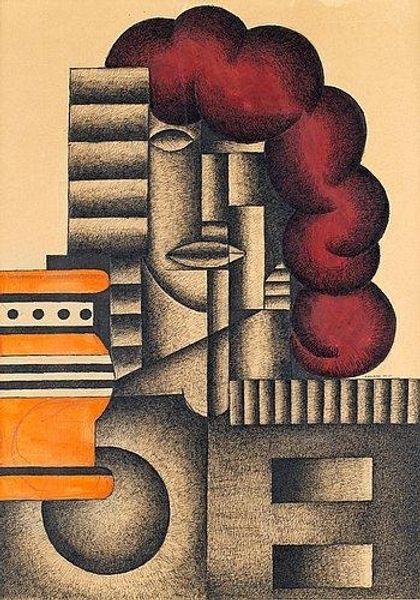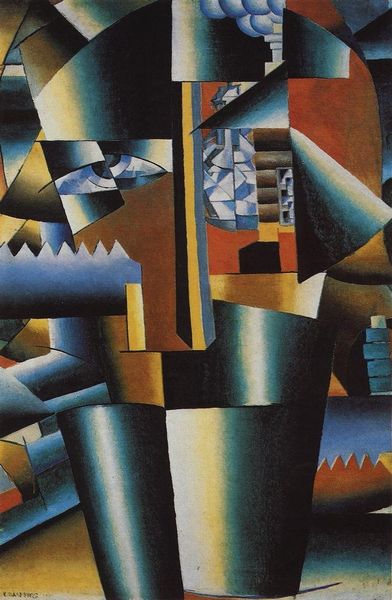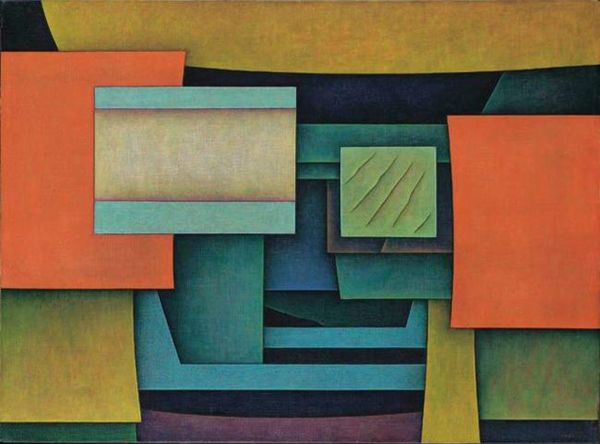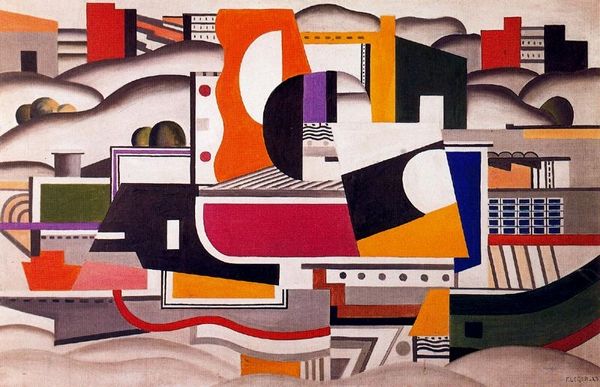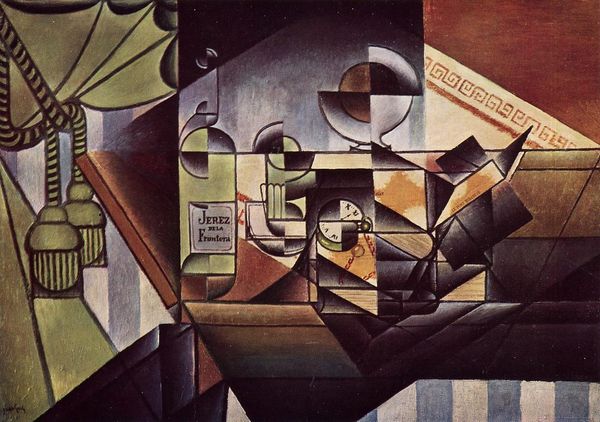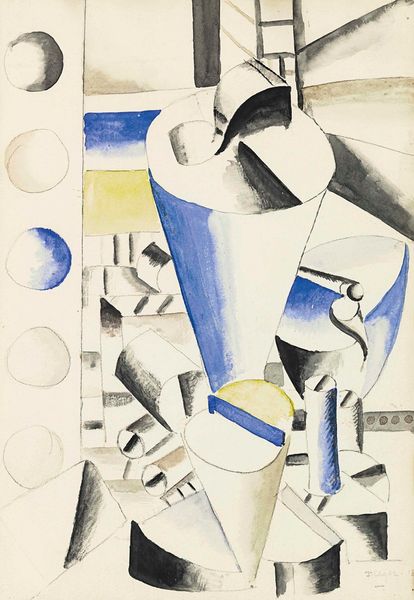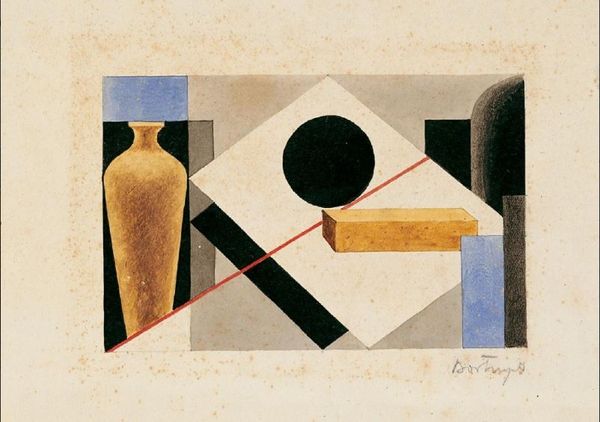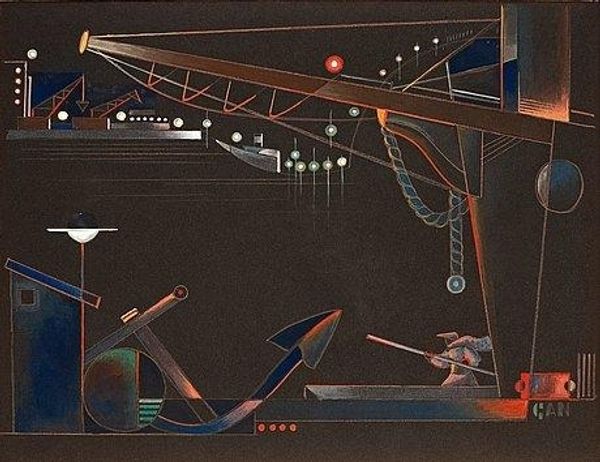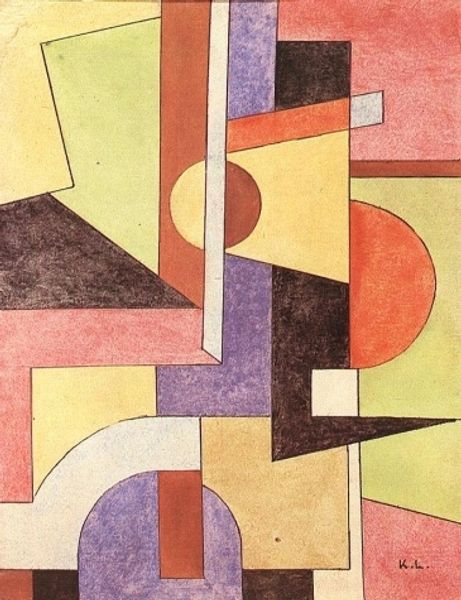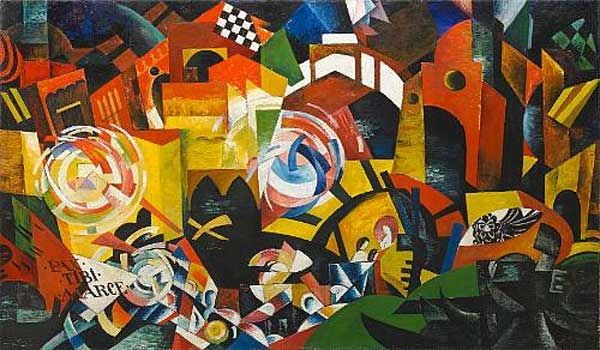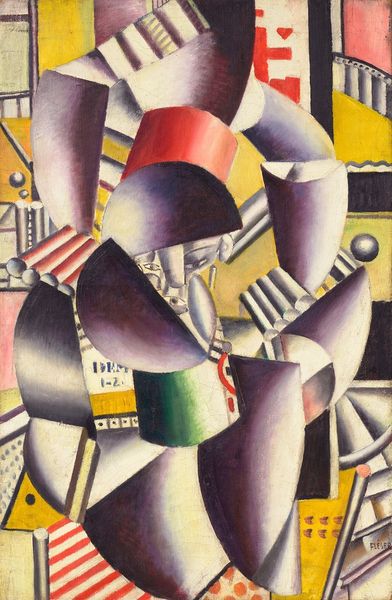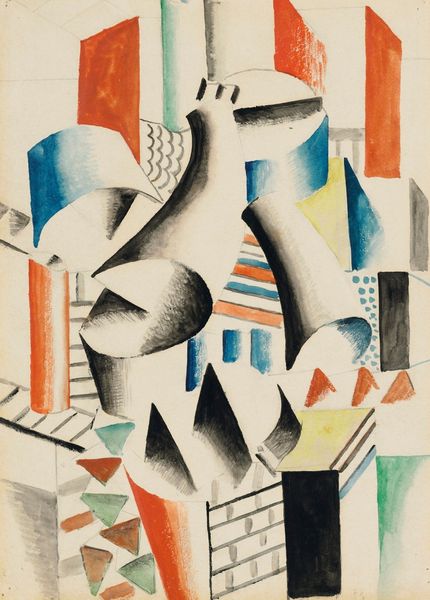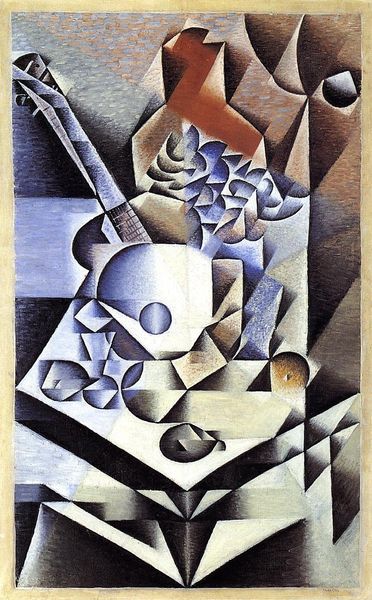
drawing, graphite
#
drawing
#
landscape
#
pencil drawing
#
geometric
#
abstraction
#
graphite
#
cityscape
#
surrealism
Copyright: Public domain
Curator: The immediate feeling I get from this drawing is unease. All these geometric forms scattered haphazardly, that giant eye peering down from the sky... it's incredibly unsettling. Editor: Indeed. We're looking at "Apocalyptic Landscape," a graphite drawing by Otto Gustav Carlsund from 1933. Its fusion of geometric abstraction with surreal elements renders it a fascinating object. Curator: I'm immediately struck by the contrast in textures achieved with the graphite. You've got these smooth, cylindrical forms against the more roughly shaded blocks, juxtaposed with that cloud-like stippling around the eye and that large circular... target, perhaps? Editor: A semiotic analysis suggests those contrasting textures create distinct visual planes. The ordered forms below contrast starkly with the cosmic, almost judgemental, sphere and eye above, evoking feelings of impending doom. Think about the sociopolitical atmosphere in Europe in 1933—the rise of totalitarian regimes, economic depression. Do you believe those concerns bled into this work? Curator: Certainly. Art doesn’t exist in a vacuum. The tumbled geometry feels symbolic of societal collapse, of old structures upturned. It makes me wonder how his own experiences or observations were brought to the canvas. Perhaps he envisioned the future for what he believed it could become, considering all of those structures were beginning to show fractures. Editor: Precisely! Carlsund, aligned with the Parisian artistic milieu of the 1930s, employed abstraction as a potent tool for social critique. His art could symbolize that time while being so beautifully surreal in the technique itself. Curator: Looking at the composition further, one has to give Carlsund credit for his artistic control. Even in supposed chaos, there is something visually harmonious. Editor: Agreed, the spatial arrangement, while jarring, generates a compelling visual rhythm. The pencil strokes invite the gaze and holds it there. Despite its diminutive scale, this drawing carries significant weight. I think for those exploring this piece, we hope to evoke an emotion or reflection upon seeing the piece. What better reflection for its time can someone provide? Curator: I concur. Ultimately, Carlsund masterfully employed formal elements to amplify a historical narrative of apprehension. Editor: The historical context provides a lens for understanding the artist’s visualized emotion of fear and disruption; that specific feeling is not one that fades over the ages, so it remains thought-provoking to the observer to this day.
Comments
No comments
Be the first to comment and join the conversation on the ultimate creative platform.
